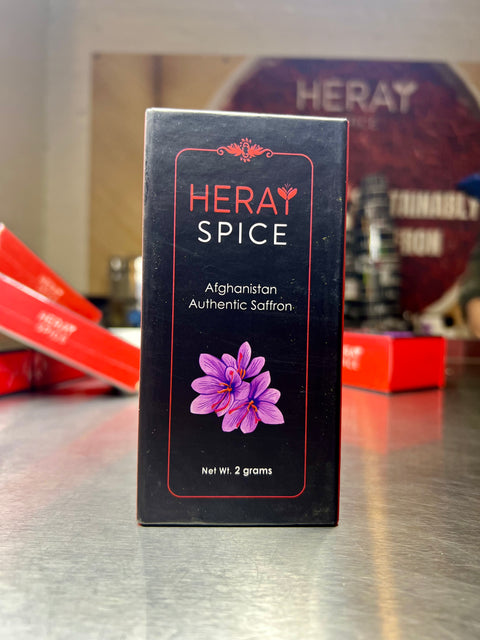Afghan and Japanese cuisines, seemingly worlds apart in terms of culture and geography, share some surprising similarities that reveal the universality of culinary themes and techniques. Here are some commonalities that bridge the gap between these two diverse culinary traditions:
Rice as a Staple
Both Afghan and Japanese cuisines heavily rely on rice as a staple ingredient. Afghan cuisine features dishes like pilaf, while Japanese meals often centre around steamed rice served alongside various dishes.
Emphasis on Fresh Ingredients
Both cultures value fresh, seasonal ingredients. Afghan and Japanese dishes highlight the importance of using high-quality, locally sourced produce, whether it's fresh herbs, vegetables, or seafood.
Use of Seasonings and Spices
While the specific spices and seasonings differ, both cuisines make liberal use of seasonings to enhance flavours. In Afghanistan, it's common to find dishes spiced with cumin, coriander, and cardamom, while Japanese cuisine uses soy sauce, ginger, and miso.
Noodle Dishes
Afghanistan has its version of noodles, known as "ashak," which are similar in concept to Japanese udon or soba noodles. These dishes feature various sauces and toppings.
Widespread Use of Grilled Meats
Both cuisines have a tradition of grilling meats, often skewering them for kebabs (Afghan) or yakitori (Japanese). The smoky, charred flavours are appreciated in both cultures.
Stuffed and Rolled DishesAfghan culture has dishes like "dolma" (stuffed grape leaves), which are reminiscent of Japanese sushi rolls. Both feature carefully wrapping ingredients in a manner that balances flavours and textures.
Tea Culture: Tea is a significant aspect of both Afghan and Japanese daily life. In Afghanistan, green tea is popular, while in Japan, various types of green tea take centre stage.
While Afghan and Japanese cuisines are unique in their own right, these common elements illustrate the broad appeal of certain culinary principles that transcend cultural and geographical boundaries. Both cuisines offer a rich tapestry of flavours and traditions that continue to captivate and delight food enthusiasts around the world.
So, if you'd like to get creative and incorporate saffron into a sushi-inspired dish, you can make a saffron-infused rice and use it to create a unique saffron sushi roll. Here's a basic recipe for Saffron Sushi Rolls:

Photo credit: Mahmoud Fawzy
Ingredients
For Saffron Rice:
- 1 cup sushi rice
- A pinch of saffron threads
- 2 cups water
- 2 tablespoons rice vinegar
- 1 tablespoon sugar
- 1 teaspoon salt
For Sushi Roll:
- Nori seaweed sheets
- Sushi-grade fish (e.g., tuna, salmon, or cooked shrimp)
- Fresh vegetables (e.g., cucumber, avocado, and carrot)
- Soy sauce, pickled ginger, and wasabi for serving
Instructions
1. Prepare Saffron Rice
- Rinse the sushi rice under cold water until the water runs clear.
- In a small bowl, steep a pinch of saffron threads in a tablespoon of warm water for a few minutes. This will help release the saffron's flavour and colour.
- In a rice cooker or on the stovetop, cook the sushi rice according to the package instructions, using the saffron-infused water as part of the cooking liquid.
- While the rice is still warm, transfer it to a mixing bowl. In a separate bowl, mix the rice vinegar, sugar, and salt until the sugar and salt dissolve. Pour this vinegar mixture over the cooked rice and gently fold it in to season the rice. Allow the rice to cool to room temperature.
2. Prepare Sushi Fillings
- Slice your chosen sushi-grade fish into thin strips or pieces.
- Cut your fresh vegetables into thin strips or julienne.
3. Assemble Saffron Sushi Rolls
- Lay a bamboo sushi rolling mat on a clean surface and cover it with plastic wrap.
- Place a sheet of nori, shiny side down, on the plastic-covered bamboo mat.
- Wet your fingers to prevent the rice from sticking and spread a thin layer of saffron rice over the nori, leaving about half an inch of nori at the top without rice.
- Add your desired fillings - sushi-grade fish and fresh vegetables - in the centre of the rice.
- Carefully lift the bamboo mat with the nori and fillings, and start rolling it into a tight cylinder, using gentle pressure to shape the sushi roll.
- Moisten the exposed edge of the nori with a little water to seal the roll.
- Using a sharp knife dipped in water, slice the saffron sushi roll into bite-sized pieces.
4. Serve
- Arrange the saffron sushi rolls on a plate.
- Serve with soy sauce, pickled ginger, and wasabi on the side.
Enjoy your unique saffron sushi rolls as a fusion twist on traditional sushi!
You can get two of our ingredients on our website!










